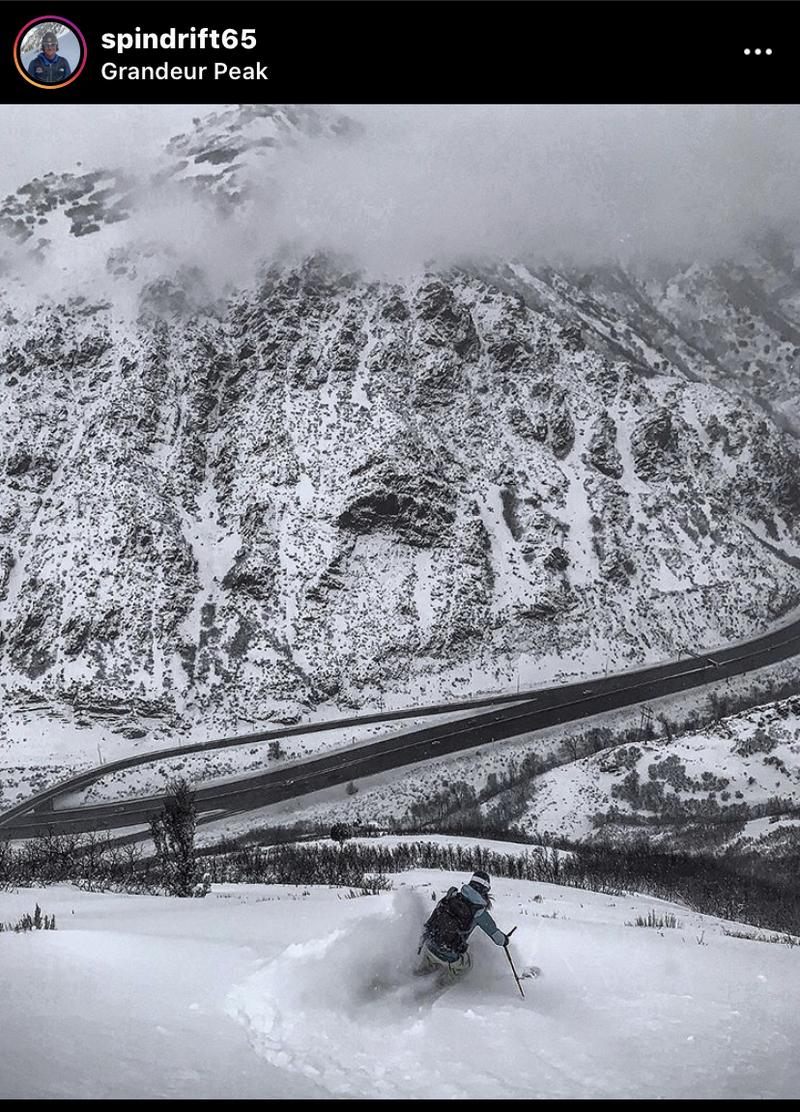Discounted lift tickets - Thanks to the generous support of our Utah ski resorts and Ski Utah, all proceeds from these ticket sales go towards paying for avalanche forecasting and education! Get your tickets
here.
Skies are partly cloudy.
Winds veered to the north and northeast and are blowing 10mph with gusts to 15.
Mountain temperatures are all below zero. 11,000' temps are -10°F. Reynolds Peak at 9400' is a balmy -2°F. Wind chill is -16°F
Snow totals are 10"(0.68"SWE) in upper LCC. 15" was reported mid-canyon.
BCC and PC totals are 6" and 4", respectively (at least in the upper elevations). Greg Gagne reported over 2' of new snow in Porter Fork of Mill Creek Canyon.
Valley and bench totals are 12-20", but that's no secret. The SLC airport set a snowfall record for Feb 3rd with 8.6". The old record of 7" was in 1936.
Skiing and riding conditions are good, if not unusual. (Marla looking down on the traffic of I-80; pc: Mark White)
A quick nod to the SLC National Weather Service: yesterday's storm was well forecast and well messaged. Great work to the meteorologists down here.
Today we'll have partly cloudy skies, light north to northeast winds and temps in the low single digits.
The next storm is under Additional Info, below.
Minor sluffing and an occasional shallow wind drift triggered by ski area control teams.










